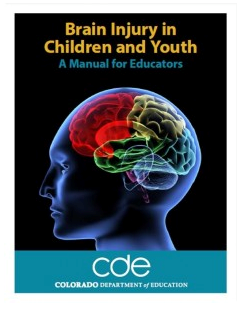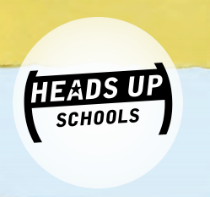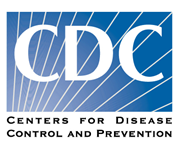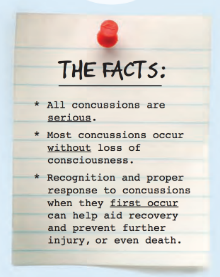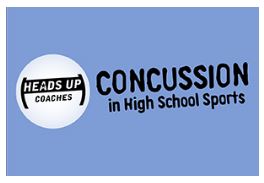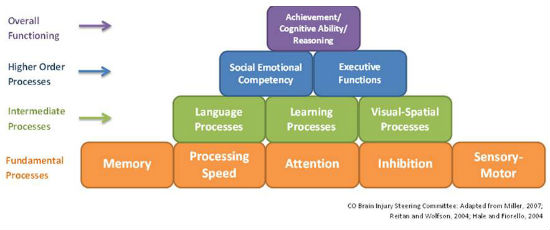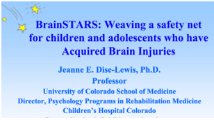TBI Toolkit
TBI 101 Pages: Adult | Resources for Youth
Background | For Parents | For Educators | For Healthcare Professionals
Resources for Educators
Brain Injury in Children and Youth: A Manual for Educators
The Colorado Department of Education developed a manual for educators which includes the following:
- Overview of the Manual
- Ch. 1: The Brain: Basic Neuroanatomy/Neurophysiology
- Ch. 2: Developmental Stages and the Effects of an Acquired/Traumatic Brain Injury
- Ch. 3: Changes in Learning and Intervention Strategies
- Ch. 4: Social/Emotional Competency
- Ch. 5: 504 Plans, Response-to-Intervention (RTI) and Special Education
- Appendix: Citations and Resources
Return to Learn
The Centers for Disease Control and Prevention (CDC) has developed a "flexible set of materials for professionals working with grades kids in K-12" called HEADS UP to Schools.
Returning to School After a Concussion: A Fact Sheet for School Professionals
The CDC has also created a "Returning to School After a Concussion: A Fact Sheet for School Professionals. Information covered includes:
- What is a concussion?
- What role do I play in helping a student return to school after a concussion?
- How can a concussion affect learning?
- What to look for after a concussion?
- When is a student ready to return to school after a concussion?
- Who should be included as part of the team supporting the student?
- How can understanding concussion symptoms help with identifying a student's individual needs?
- What roles do cognitive exertion and rest play in a student's recovery?
- Signs and Symptoms of a Concussion
- How can I help identify problems and needs?
- Some Strategies for Addressing Concussion Symptoms at School
- What symptoms persist: What types of formal support services are available?
A Fact Sheet for Teachers, Counselors, and School Professionals - English
Topics covered include:
- What is a concussion?
- What are the signs and symptoms of concussion?
- What are concussion danger signs?
- How can I recognize a concussion?
- What do I need to know about my students returning to school after a concussion?
Hoja informativa para maestros, consejeros y personal escolar profesional
Los temas cubiertos incluyen:
- ¿Qué es una conmoción cerebral?
- ¿Cuáles son los signos y síntomas de la conmoción cerebral?
- ¿Qué son las señales de peligro de conmoción cerebral?
- ¿Cómo puedo reconocer una conmoción cerebral?
- ¿Qué necesito saber sobre mis alumnos que regresan a la escuela después de una conmoción cerebral?
Descargue su propia copia aquí.
HEADS UP to School Sports
As highlighted in the fact sheet described above is guidance regarding how teachers can be included as part of the team supporting students returning to play.
“All teachers interacting with the student (including the physical education teacher): Teachers can often help observe changes in a student, including symptoms that may be worsening. Teachers are also in a position to interact regularly with the student’s parents, thereby providing a channel to obtain and share information with them about the student’s progress and challenges.”
Visit HEADS UP to School Sports
Building Blocks of Brain Development
Learn more about the building blocks of brain development to increase understanding about how a brain injury, particularly a moderate to severe injury, might be expected to impact functioning.
To learn more about processes and functioning see: Building Blocks of Brain Development
BrainSTARS
The BrainSTARS manual was developed by Jeanne E. Dise-Lewis, PhD and her colleagues to help parents and teachers work collaboratively to facilitate children's recovery post-brain injury. Chapters and tools from BrainSTARS are available at: BrainSTARS
A PowerPoint by Dr. Dise-Lewis titled, "BrainSTARS: Weaving a safety net for children and adolescents who have Acquired Brain Injuries" can be found at: BrainSTARS: Weaving a safety net for children and adolescents who have Acquired Brain Injuries
REAP: The Benefits of Good Concussion Management
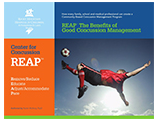
For more on good concussion management see materials from the Rocky Mountain Hospital for Children Center for Concussion.
Remove/Reduce
Educate
Adjust/Accommodate
Pace
How every family, school and medical professional can create a Community-Based Concussion Management Program. Visit: REAP: The Benefits of Good Concussion Management
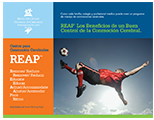
REAP: Los Beneficios de un Buen Control de la Conmoción Cerebral
Como cada familia, colegio y profesional medico puede crear un programa de manejo de conmociones cerebrales. Visitar: REAP: Los Beneficios de un Buen Control de la Conmoción Cerebral
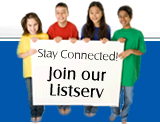
Stay Connected: Join the Colorado Kids Brain Injury Resource Network Listserv
To Subscribe send an email to: TBI-join@web.cde.state.co.us
You will receive a confirmation email. You will not be added until you respond to this email. If you have a problem, try using “plain” text or check with the technology people in your district.
References
Centers for Disease Control and Prevention, N. C. f. I. P. a. C., Division of Unitentional Injury Prevention. (2015). A Factr SHeet for Teachers, Counselors and School Professionals. In.
Centers for Disease Control and Prevention, N. C. f. I. P. a. C., Division of Unitentional Injury Prevention (2015, February 16, 2015). HEADS UP to Schools. Retrieved from https://www.cdc.gov/headsup/schools/index.html
Connor K, D. J., Dise-Lewis JE, Murphy M, Santlstevan B, Seckinger B, Adams C, Adams L, Harrigan J, Pearce A. (2011). Brain Injury in Children and Youth A Manual for Educators. In (pp. 80).
Crawford N, D. J., Dise-Lewis J, Hurley P, Koepsell M, McAvoy K, Patrick K, Thompson P, Wilburn L. (2018). Building Blocks of Brain Development.
Dise-Lewis, J. E. (2012). BrainSTARS: Weaving a safety net for children and adolexcents who have Acquired Brain Injuries. In (pp. 40): BrainSTARS.
McAvoy, K. (2013). REAP the Benefits of Good Concussion Management. In (pp. 20): Rocky Mountain Hospital for Children.
Prevention, C. f. D. C. a. (2016). Returning to School After a Concussion: A Fact Sheet for School Professionals In.
Site Map
Contact Information
Denver
Rocky Mountain Regional VAMC (RMR VAMC)
1700 N Wheeling St, G-3-116M
Aurora, CO 80045
720-723-6493
Salt Lake City
VA Salt Lake City Health Care System
500 Foothill DR
Salt Lake City, UT 84148
801-582-1565 x2821














